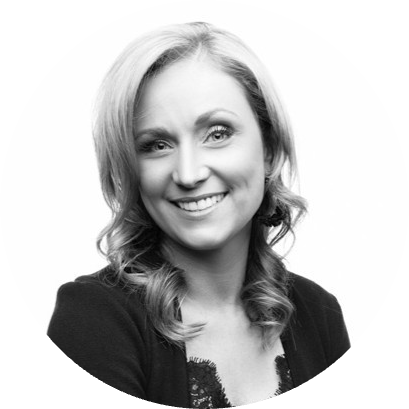How Mastercard is leveraging AI in talent acquisition

HR functions are constantly evolving to meet the needs of a modern workforce. That includes learning the ins and outs of how AI is impacting your sector, navigating a changing economic landscape, and ensuring people are taken care of.
Kerry Royer is doing all that and more in her role as senior vp and head of global talent acquisition at Mastercard. Mastercard has over 33,000 employees and is doing business in over 200 countries. She’s worked across talent acquisition for over a decade, formerly working as the global head of talent acquisition at Verizon.
She spoke with WorkLife about the realities of her HR function today in a constantly evolving work environment as she is responsible for the enterprise-wide talent acquisition strategy and delivery on all levels from campus recruiting to executive management.
Answers were edited for clarity and flow.
How has your role changed as the modern workforce continues to evolve?

It’s continually changing. I joined Mastercard in 2022. We’ve really been transforming the talent acquisition organization — this is probably a similar story around the role at many companies. Our focus was to build a best-in-class talent acquisition function. In 2021, post-COVID, it was a time of rapid growth in the business, and rapid headcount growth at the time of the Great Resignation. It created a ton of pressure for talent acquisition. How do you scale up and double or triple the amount of volume in terms of hiring? At Mastercard, we were once highly transactional with a lot of manual processes. It was really no automation. We had been rapidly growing for years, so a lot of the infrastructure was outdated.
As we thought about our transformation journey, it was technology that was at the center of that. How can technology help us on this journey? Technology has helped us really transform the function over time.
How open were people to using technology to change the HR function?
People were just excited. When you’re in a moment where people can’t really keep up, you’re ready. Plus, you’re hearing a lot about it. There are all these investments in HR technology and everywhere you look there are vendors reaching out to you and trying to sell you on a product. So we were really excited about the opportunity. We like to be early adopters.
We kicked off an RFP to look at different vendors to help us on our CRM side as well as career sites where we found global HR tech company Phenom. That was the end of 2021. That’s where we started because we had to drive scale. The only way we could do that was through technology.
What do your tech capabilities look like today?
It’s a continual journey. We’re always looking across the end-to-end lifecycle. So we started with our career site in the CRM. But one of our biggest pain points — it’s such a simple thing but it was a massive issue — was around interview scheduling.
When we evaluate technology partners, we look for not just ‘what do you have right now?’, but ‘how can we build and grow our technology?’ That’s why we wanted modern AI-enabled technology because we know that we’re going to continue to grow and use different features and the products will evolve.
So, we were able to quickly add on interview scheduling, and that was fantastic. We went from taking multiple days to schedule interviews to reducing that time by 90%, where most are scheduled within three hours. That’s rapid transformation.
There are a lot of other use cases we’re looking at too, like the two-way integration to send data back and forth between our ATS so we can get more out of that.
Have there been any pain points along the way?
There’s always a learning curve when you think about using new technology. I’ve got over 200 employees. Having them learn how to work alongside the technology, takes more time to gain adoption and understanding. This is something that keeps me up at night. There is so much happening, there’s so much change as we are transforming and we’re adding new technology. It’s an area that we continue to focus on.
Technology is changing the rules, and people’s roles have shifted so that they can move more into building automation and data integrations. Things we never really did before. With that comes a lot more data, which is an amazing opportunity, but that means you have to measure a lot more things. Now I can see when someone is looking on career sites, when they applied, all of these different touch points on their journey. We have increased the amount of time that people stay on our career site by over 100% and increased our talent community by over 500%.
What impact does it have when you start utilizing more tech?
It’s a lot of data, and it’s really interesting. But how do you determine the ROI on where we spend our time: investment in the technology or the upskilling of recruiters? It’s an interesting challenge as we think about the future.
The other thing is what happens when you have these perfectly generated applications from AI meeting these perfectly generated job descriptions and postings. AI meets AI. Now what? What that means is there’s going to be a premium on the human interaction. That means recruiters have to really shift from thinking about managing and scheduling interviews and doing all of these administrative things to thinking ‘I’ve really got to differentiate the experience that I provide to candidates in the journey.’ So these are things I’m working on. How do we upskill the recruiters to set them up for success because that’s where we need to go.
